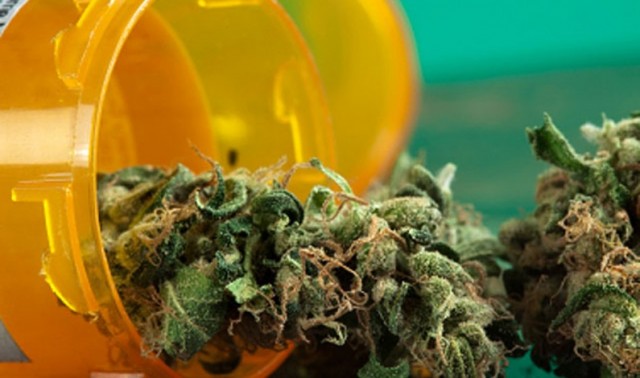 Much to the chagrin of the Prohibition Patrol, yet another study has been released further bolstering the claim that marijuana is a miracle medication/plant.
Much to the chagrin of the Prohibition Patrol, yet another study has been released further bolstering the claim that marijuana is a miracle medication/plant.
Dr. Wai Liu, senior author of this study out of the University of London found through trials in mice that THC and CBD in tandem with radiation treatment have shown extremely promising results as brain tumor assassins.
For some context, radiation therapy alone has had negligible effects on tumor death. Mostly because radiation therapy tends to be more akin to a grenade going off than a precision sniper shot. Furthermore, just like healthy cells, tumor cells tend to repair themselves after radiation treatment so any ground gained through radiation is lost when the tumor repairs itself.
Researchers tried using only THC and radiation, as well as just CBD and radiation, but found that using THC and CBD together with radiation yielded far better results than any of the other sets of combinations.
So why and how does this tandem effect happen?
“We think this is due to the different pathways that these cannabinoids hit,” said Liu. “Specifically, THC works via receptors, whilst CBD may not need them; consequently, using them together results in a ‘priming’ effect in tumor cells, making them more sensitive to the ‘cell killing’ effects of irradiation.”
Liu’s study in mice models found THC and CBD, when used together, helped shrink the tumors to a far greater extent than radiation and just one of the compounds, or radiation alone, which actually yielded a negligible effect on tumor growth. What’s more, the team needed a smaller dosage of each substance when they were used together in order to kill 50 percent of the cancer cells. They needed 14 millimolar (a unit of concentration) of CBD and 19 millimolar of THC. Using both, they needed only seven millimolars each.
This finding is especially important because it means patients won’t need as much THC, the main psychoactive ingredient in cannabis that may be unpleasant for people receiving treatment. When a psychoactive compound binds to the cannabinoid receptor inside a brain cell, it can trigger the traditional “high” effects of recreational use. But in small enough doses, the compound can retain its anti-cancer properties without any side effects. The trick is to find the balance, Liu says.
So what’s actually going on that allows cannabis to be so effective? Liu suspects the answer has to do with how the substances interact with the receptors and the radiation treatment.
“We think that the cannabinoids are hitting a number of cell signaling pathways, which primes them to the effects of irradiation,” he said. “Pre-treatment with the cannabinoids seems to interfere with the ability of the tumor cell to repair the DNA-damaging effects of irradiation.” Thus, the tumor cells get wiped out.
This is pretty ground-breaking stuff. Perhaps, one day, the list of conditions that cannabis cannot help will be smaller than the list of conditions that it can.
I also hope the US government is paying attention. So far, Israel and England are beating the dog shit out of us in the field of cannabis research. I suspect this is mostly because their governments aren’t obnoxiously standing in the way of progress for petty, anachronistic reasons. Money seems to be the only thing that speaks to these folks. Maybe we should stop funding the DEA to harass people and shit all over their rights and open the gates to cannabis research (and the potential zillions of dollars it might yield)?
But it is the US government, so I’m not holding my breath that they will do anything productive.









